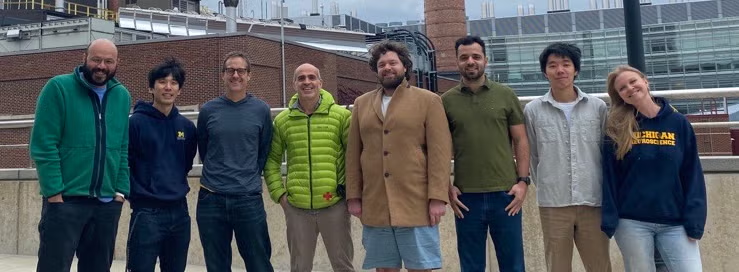We are interested in how neural circuits, composed of excitatory and inhibitory populations of neurons coordinate to generate the unique oscillatory spike patterns we observe in the hippocampus, and how the resulting these activity patterns represent, encode, and recall episodic memory, in concert with other brain regions, such as the prefrontal and posterior parietal cortices. To study these questions, we use machine learning and statistical analyses of extracellular recordings from 100s of units in freely moving animals coupled with optogenetics and chemogenetics to perturb the underlying circuitry during learning, recall, and sleep.
Among the most salient rhythms we observe in the CA1 region of the rat hippocampus are theta (5-12 Hz) oscillations and transient sharp-wave ripples (100-250 Hz). These rhythms reflect an exquisite coordination of spiking activity and are likely to underlie the mechanisms by which memories are processed and accessed.
During theta oscillations of exploring rats, neurons in the hippocampus (and in some other brain regions) fire at a phase relative to theta that corresponds to the distance from the ‘preferred’ location of the neuron. This relative phase changes (‘precesses’) as the animal moves. A beautiful consequence of this phenomenon on the network level is that neurons fire in “theta sequences” during exploration, with a precision on the order of tens of milliseconds–a timescale most suitable for synaptic plasticity (LTP and LTD).
During periods of restfulness, after the animal has stopped exploring (even briefly), irregular bursts of population activity give rise to brief but intense high-frequency (100-250 Hz) oscillations in the CA1 pyramidal cell layer, known as ‘sharp-wave’ ripples. The neuronal population spiking activity during the ripples is highly structured and is a major area of our research interest.
There is evidence to suggest that these rhythms and the underlying spiking activity of the neurons in the hippocampus are responsible for the storage, recall, and consolidation of episodic memory in the brain. Our lab, headed by Dr. Kamran Diba, makes use of large-scale electrophysiology and optogenetics to study these questions related to Neural Circuits and Memory in the cortex.

